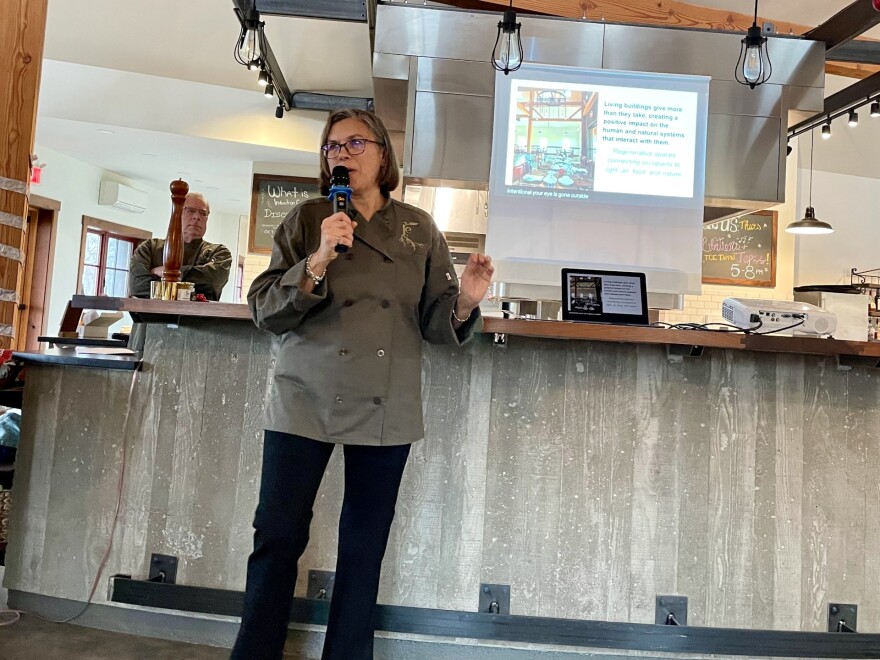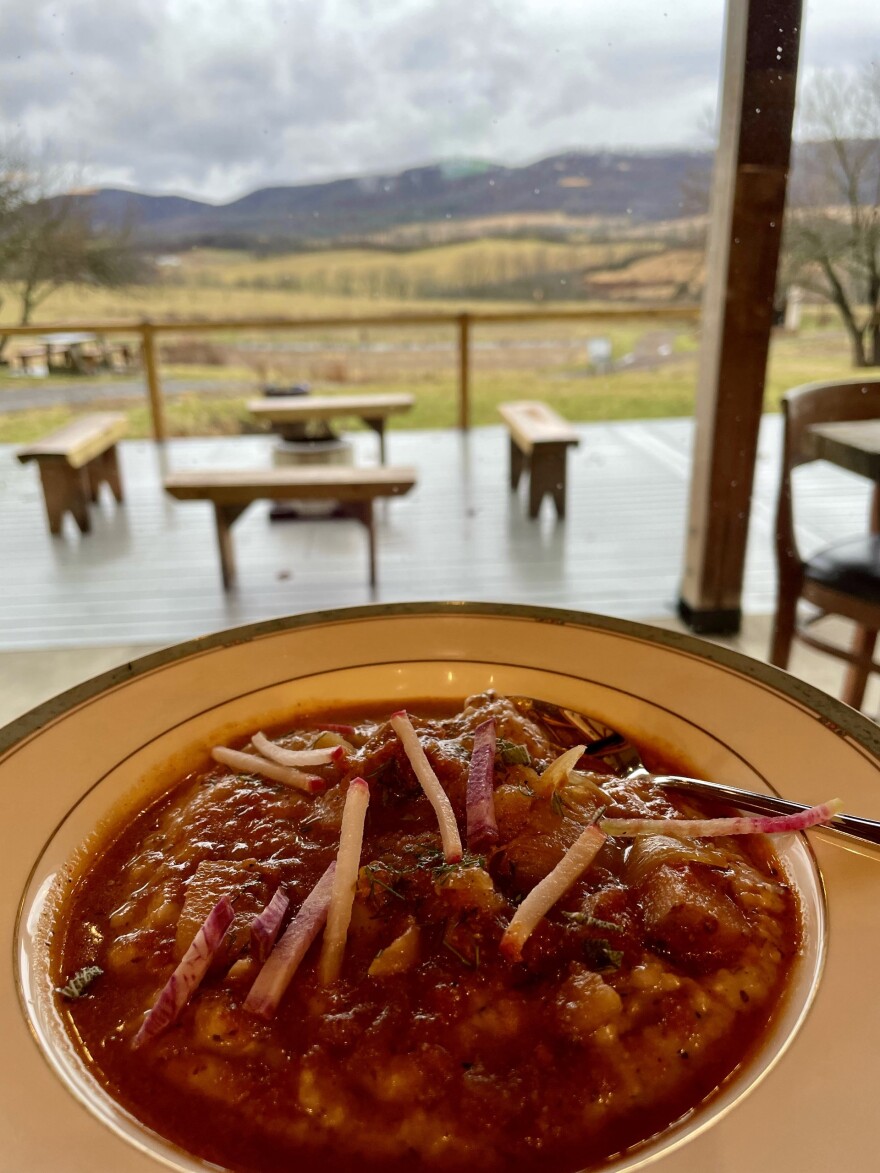In the RE Farm Café kitchen, chef Brenda Palmer is holding a sizzling pan of curried lamb meatballs on a flat, black cooktop. She has been a chef for more than 30 years, mostly using gas stoves.
“In a commercial kitchen, working on gas is this hot, greasy, sweaty process,” Palmer said.
But RE Farm Café’s kitchen doesn’t use gas. It uses only induction cooktops.
Recent studies say gas stoves are polluting the air in our homes and could make us sick. I’m especially interested in other options because I have a gas stove — and a young child at home. So, to find out more about induction as an alternative, I took part in a class at RE Farm Café in State College featuring induction cooking. Induction is less common, but it’s growing in popularity.
Palmer’s demonstration is part of a class called “Discover the Magic of Induction Cooking.” The magic is actually magnets. Induction uses an electromagnetic field to heat the pan. That means it’s more efficient and environmentally friendly than gas or electric. And less heat is lost, so the kitchen stays cooler.
Palmer says she doesn’t miss cooking on gas stoves.
“The downside is there’s no flames,” Palmer lamented, half-jokingly. “But that’s the only downside.”
“No flames” means setting a number for the heat level instead of eyeballing flame height. So there’s some learning curve. But no flames also means there are none of the dangerous chemicals that come with burning natural gas. RE Farm’s kitchen has strong range hoods that would suck out steam and chemicals, but many home kitchens do not.

A Stanford University study last June shows gas stoves release benzene, which can cause cancer. Another study found that the nitrogen dioxide the stoves release causes 13% of childhood asthma in the United States.
That’s concerning to me, because I have a 5-year-old daughter and a gas stove with one of those microwave/range hood combos that recirculates air, instead of sucking it outside. Since hearing about those studies, I usually open a window while I cook.

So, when I saw this induction cooking class, I was intrigued. I love to cook, and I love cooking with gas. I’ve never loved cooking on electric. But I’d heard good things about induction. That – in addition to no scary emissions – it’s quick to heat up and cool down, and it’s incredibly energy efficient.
“If you think about your air quality and your energy use and your health, why wouldn’t you do this?” Monica Gastiger said.
The energy efficiency is why Monica and Duke Gastiger chose induction for the RE Farm Café kitchen. They’re the owners of the restaurant, which they say is a rare example of an all-induction kitchen. When they planned RE Farm Café, they knew they wanted it to be self-sufficient. It’s powered by solar panels they installed on the grounds. What they did not know was how that would limit their choice of appliances. Duke says energy consultants gave him an “energy budget” for the restaurant.
“So whatever equipment you want, if you add everything up it couldn't be more than 12 and a half kilowatt hours because we can only produce so much energy,” Duke Gastiger said. “The answer was induction; it is so much more energy efficient.”

The West Penn Power Sustainable Energy Fund subsidized the class.
RE Farm has also held classes for the Department of Environmental Protection. They invited building contractors to come learn about induction as an option for kitchens they’re installing.
So what are the downsides? Induction ranges cost more, starting at least $1,000. There’s that learning curve. You might need an electrician to convert your outlet to 240 volts if you’re switching from gas. And cookware has to be magnetic to work on induction.
John Hayes attended the class with a big group from the Penn State food science department, where he’s a professor. He said his family made the switch to induction when their gas range died, and he had to buy some new pots and pans.

“But that was just an excuse to buy some nice cast iron that cooks fabulously,” Hayes said.
Hayes likes that it’s better for the planet and for indoor air quality, but, mostly, he said it cooks better.
“I just love it,” Hayes said. “It puts out a lot more heat than even my gas range did. I do a lot of stir frying and really high heat cooking techniques at home. So it was really nice to be able to get that amount of power in a residential range that normally you could only get in a commercial range.”
Hayes thinks people will be convinced once they start cooking on induction.
“And then the cleanup too. Just a wet sponge, and you’re done,” Hayes said.
I haven’t decided yet whether to switch to induction. I’m not sure I want to shell out the money for a new stove and new pots and pans while my gas stove is working fine. On the other hand, opening a window for ventilation is going to get a lot less comfortable in the coming months.



